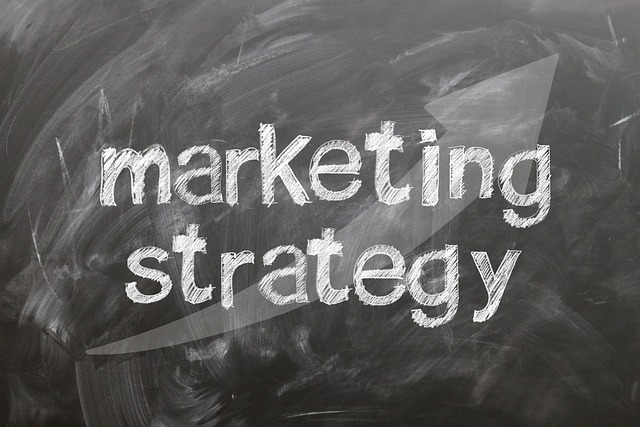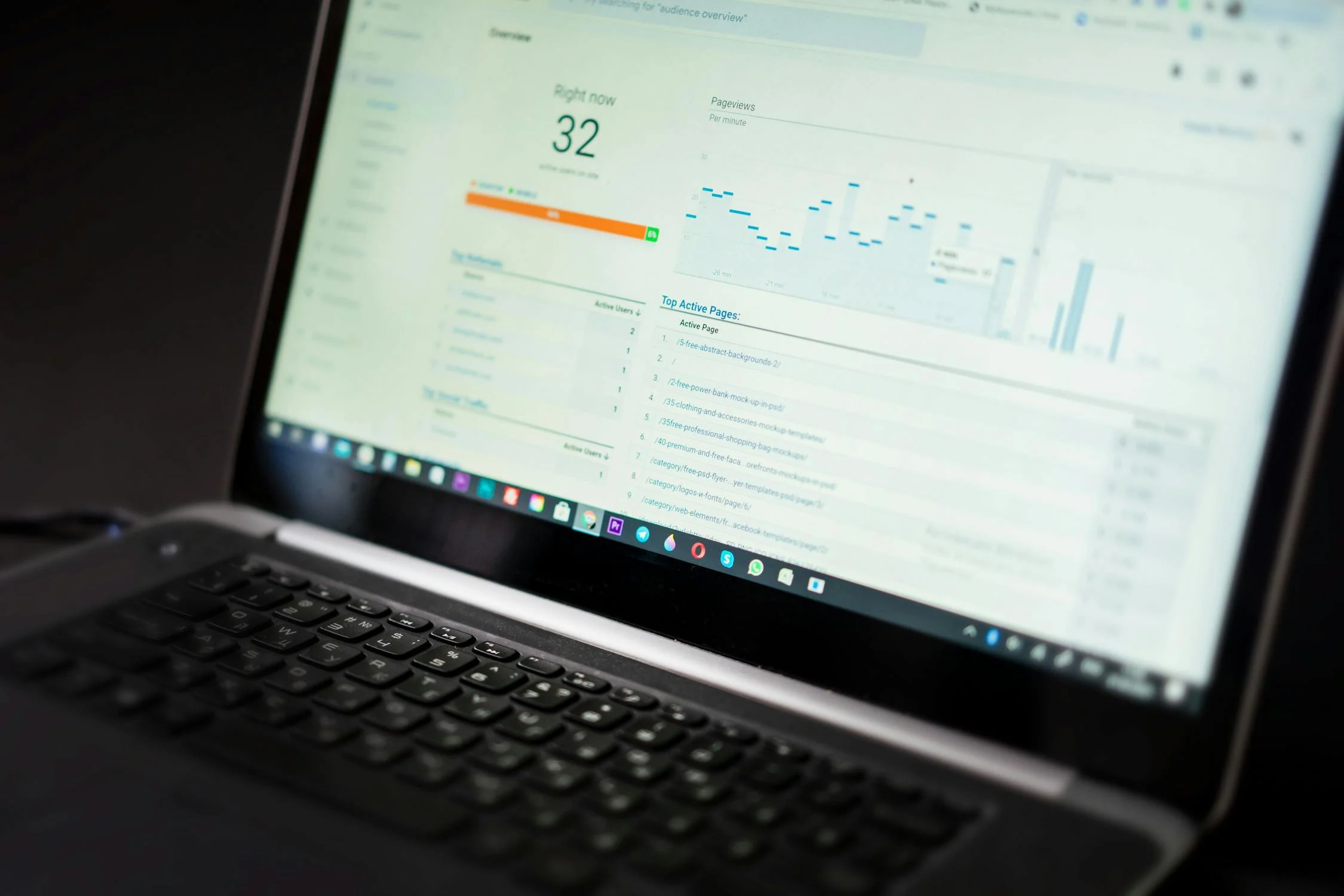Are you pouring precious resources into marketing campaigns that might not be delivering the results you expect? You’re not alone. A large-scale study on eBay showed that brands overestimated the impact of their ads by a whopping 4,100%.
Don’t become another statistic! This guide will equip you with the tools and strategies on how to measure the success of your intentional marketing plan effectively and maximize your return on investment.
Being Intentional About Your Marketing Efforts
Intentional marketing is a proactive approach that goes beyond simply launching campaigns and hoping for the best. It’s about clearly defining your goals, understanding your audience, and selecting the right tactics to achieve measurable results. It’s about gathering data, analyzing it with purpose, and using it to continuously refine your strategies. In a nutshell: that means you’ll have to start measuring marketing effectiveness. By focusing on cost per lead, for instance, you can determine how efficiently your budget is converting into potential customers.

Why is Measuring Marketing Effectiveness Important?
Imagine pouring your heart and soul into a brilliant marketing campaign, with an appropriately colossal marketing budget, only to have it disappear into the void with nary a ripple. Sounds terrifying, right? That’s the harsh reality for many businesses who neglect the crucial step of campaign measurement
Instead of blindly throwing darts at a marketing board, effective measurement acts as your treasure map for your marketing team. It creates a beacon guiding you towards success and revealing the hidden gold mines nestled within your campaigns. But why, you ask, is measuring so darn important? Let’s delve into the treasure chamber and uncover the gems:
Common Campaign Measurement Struggles:
- The Data Dragon: Many businesses fear the data, viewing it as a complex, fire-breathing beast waiting to devour them. But just like any mythical creature, data can be tamed and even befriended! With the right tools and understanding, it transforms into a powerful ally, revealing insights and trends that would otherwise remain hidden.
- Paralysis by Analysis: Drowning in a sea of metrics can lead to overwhelm and inaction. That’s why defining marketing effectiveness is so critical. The key is to identify the right metrics for your specific campaign goals. Don’t get lost in the numbers! Focus on the ones that truly point the way towards success.
- Missed Opportunities: Without measurement, you’re flying blind, potentially missing out on hidden gems within your campaign. Maybe that seemingly underperforming ad is driving valuable conversions you never knew about — and who knows what your other marketing activities might be hiding! Measurement helps you identify what’s working and what needs tweaking, ensuring you optimize every budget dollar. For example, analyzing click-through rate can reveal how compelling your call to action is to potential consumers.

The Golden Nuggets of Effective Measurement:
- Cost-Saving Superhero: Measurement isn’t just about vanity metrics and bragging rights. It’s about identifying what’s not working and cutting your losses. Once you learn to measure success, you can stop pouring money into ineffective channels and redirect those resources towards proven winners, boosting your ROI and making Scrooge McDuck proud. This careful budget allocation ensures your financial resources yield more revenue.
- Optimization Oasis: Measurement reveals the path to campaign optimization. You can refine your messaging, target your audience more effectively, and choose the channels that truly resonate. It’s like having a GPS for your marketing journey, ensuring you reach your destination – campaign success – as efficiently as possible.
Remember, measurement isn’t just about crunching numbers. It’s about gaining insights, making informed decisions, and ultimately, maximizing your impact. So, grab your sword of analysis, slay the Data Dragon, and embark on a treasure hunt filled with marketing optimization riches!
This is just the beginning of your measurement journey. In the next sections, we’ll equip you with the tools and strategies to conquer your campaigns and unearth the golden nuggets of success. Let’s turn your marketing investment into a campaign that can actually retain customers.

Step 1. Set Clear Goals to Measure Marketing Campaign Effectiveness
Are you a passionate social impact entrepreneur, striving to make a real difference in the world? Do you dream of empowering communities, tackling environmental challenges, and building a more just and sustainable future? If so, you know that simply having good intentions isn’t enough. To maximize your impact and demonstrate tangible progress, you need a clear roadmap – and that’s where setting measurable goals comes in.
Think of your social impact mission as a mountain you’re determined to climb. But without a map, compass, and well-defined checkpoints, your ascent might become aimless and unproductive. Measurable goals act as your map and compass, guiding your every step and ensuring you reach the summit – making a tangible difference in the communities and causes you serve.
Here’s where the power of OKRs (Objectives and Key Results) and SMART goals (Specific, Measurable, Achievable, Relevant, and Time-bound) comes into play to know your marketing effectiveness. These frameworks provide a structured approach to goal setting, helping you transform your lofty aspirations into actionable steps:
Objective: Empower 1,000 underprivileged women with financial literacy skills.
Key Results:
- KR1: Increase workshop attendance by 30% within 6 months.
- KR2: Secure funding for a scholarship program by Q3.
- KR3: Develop and distribute educational materials in local languages by year-end.
In this example, the objective clearly defines your social impact ambition, while the key results for marketing effectiveness break it down into measurable milestones, ensuring you stay on track and demonstrate progress to stakeholders.
But it’s crucial to avoid getting lost in the vanity metrics maze. Likes, shares, and follower counts might look good on paper, but they don’t necessarily reflect the true impact of your work. Instead, focus on key metrics that directly align with your social impact mission:
- Volunteer engagement: Track the number of hours logged by volunteers and the types of activities they participate in.
- Community partnerships: Measure the reach and effectiveness of collaborations with other organizations and local actors.
- Beneficiary progress: Conduct surveys or interviews to evaluate the positive changes your efforts have made in the lives of those you serve.
Remember, your primary goal isn’t just clicks and conversions, but lasting social change. Choose metrics that tell the story of your impact. Measuring marketing effectiveness helps you really start showcasing the ripple effect your work creates in the world. Tracking pipeline growth here can also highlight how your efforts expand your reach, how much leads generated, and influence over time.
Actionable Tips:
- Use online tools like Weekdone or Ally.io to set and track OKRs collaboratively.
- Conduct regular impact assessments to measure the progress towards your social mission.
- Leverage frameworks like SROI (Social Return on Investment) to quantify the financial impact and societal benefits of your initiatives.
- Share your journey! Publicly report your progress and impact data to build trust and inspire others to join your cause.
By setting measurable goals that are deeply connected to your social impact mission, you’ll transform your passion into a powerful force for good. So, embrace the challenge, chart your course, and climb that mountain with confidence!

Step 2. Marketing Metrics: Define KPIs for Marketing Campaign Success
With your goals firmly planted in your mind, it’s time to unearth the hidden gems that guide your campaign – Key Performance Indicators (KPIs). These are the marketing metrics that tell you whether you’re sailing towards success or drifting aimlessly in the marketing sea. But choosing the right KPIs can feel like searching for Waldo on a crowded beach. Don’t despair, adventurer! Here’s how to navigate the KPI jungle and define the ones that truly matter for improving marketing effectiveness:
Identifying Your KPIs
- Align with Goals: Remember those awesome SMART goals you set in Step 1? Your KPIs should be their loyal deputies, directly mirroring what you want to achieve. If your goal is to increase website traffic by 20%, a “unique website visitors” KPI becomes your map to achieving it.
- Target the Audience: Think of your ideal customer as a hidden oasis on your journey. Your KPIs should guide you towards them, focusing on metrics that reveal their engagement and interaction with your campaign. This could mean tracking social media mentions, email open rates, or website clicks from their demographics.
- Don’t Overcrowd the Map: Resist the urge to hoard every shiny metric you come across! Overloading your map will only lead to confusion and paralysis. Choose a handful of high-impact KPIs that truly reflect your campaign’s success and focus on those.
- Actionable Insights: Your KPIs shouldn’t be mere numbers staring back at you from a spreadsheet. They should be whispers in the wind, guiding your optimization efforts. Choose KPIs that allow you to take action, adjust your strategy, and course-correct as needed. A “conversion rate” KPI, for example, tells you not just “people visited,” but also “people who took the desired action,” giving you actionable insights to improve performance and boost sales.

Picking the Right Tools for the Job
- Website Analytics: Google Analytics is your trusted cartographer, revealing website traffic, visitor behavior, and conversion pathways. Use it to identify which marketing channels are leading to your treasure chest of leads and sales.
- Social Media Insights: Each social platform offers its own compass, like Facebook Insights or Twitter Analytics. These tools help you understand audience engagement, post reach, and campaign performance on those specific platforms.
- Marketing Automation Platforms: Tools like HubSpot or Mailchimp act as a treasure chest itself, storing data from various channels and offering dashboards to visualize your KPIs in one place. They make measuring your campaign a breeze, like having a personal genie whispering valuable insights. For instance, an email campaign managed through these platforms can track open rates and conversions seamlessly.
Remember, choosing the right KPIs is an ongoing quest. Whether you’re doing social media marketing or paid search, your tactics have to stay adaptable. As your campaign unfolds and you learn more about your audience, be prepared to refine and adjust your treasure map. Define your success metrics — but embrace the flexibility and let your KPIs guide you towards that coveted island of marketing success!
Step 3: Charting Your Course – Setting a Campaign Timeframe
You’ve identified your goals, unearthed your KPIs, and equipped yourself with the tools to navigate the marketing sea. Now, it’s time to set the sails and plan your journey – determining the timeframe for your campaign. This might seem like choosing between a short, thrilling expedition or a grand, year-long voyage. Both have their merits, and the ideal choice depends on your destination and resources.
Short vs. Long Campaigns: Weighing the Anchor
- Short Expeditions: Think of quick, targeted campaigns like flash sales or social media blitzes. These are perfect for testing new ideas, generating short-term buzz, or promoting specific events. Their benefits include agility, lower risk, and faster data analysis. But remember, their impact might be limited, and long-term brand building takes time.
- Grand Voyages: Longer campaigns, like brand awareness initiatives or content marketing strategies, are like epic journeys across uncharted waters. They require careful planning, consistent effort, and sustained investment. However, their rewards can be bountiful: deeper audience engagement, increased brand strength, and long-term market share wins.

Finding The Sweet Spot of Your Marketing ROI:
Choosing the right timeframe depends on several factors:
- Campaign goals: Short-term goals like lead generation might be better served by focused sprints, while long-term goals like brand building thrive on sustained voyages.
- Target audience: Understanding your audience’s attention span and preferred engagement frequency helps determine the ideal campaign duration.
- Budget and resources: Longer campaigns require more investment in content creation, personnel, and marketing tools. Choose a timeframe that aligns with your budget constraints.
- Industry trends: Consider the typical campaign length for your industry and market when making your decision.
Remember, your timeframe isn’t set in stone! Marketing management isn’t a one-and-done activity. You can adjust it as you sail along, based on your campaign’s performance and new information. You might find that your customer acquisition cost is too high, cutting your marketing ROI — which signals that you need to change your marketing spend. Perhaps your marketing funnel isn’t working quite as well as you want it too. Tracking qualified leads and sales can help you assess whether your timeframe is yielding the desired business results.
Treat it as a flexible map, guiding your journey while allowing for spontaneous discoveries and course corrections. Ready to set your sails? In the next section, we’ll delve into the art of understanding your audience’s story and building a truly effective marketing campaign.
Step 4: The Customer Lifetime: Navigating the Heart of Your Audience – Understanding Their Story
Adventurer, you’ve plotted your course, set your sails, and stocked your ship with KPI treasures. But before embarking on your marketing voyage, there’s one crucial step that can make or break your journey: understanding the heart of your audience. Think of them as the wise guides who hold the secrets to navigating the most treacherous waters and reaching the most rewarding shores.
Unveiling the Hidden Treasure Map of Customer Acquisition:
- Personas – Portraits of Your Ideal Customers: Instead of casting a wide net, craft detailed personas that bring your ideal customers to life. Imagine their demographics, interests, challenges, and dreams. Give them names, faces, and stories. The more vividly you understand them, the better you’ll tailor your messaging and channels to resonate with their deepest needs.
- Empathy – The Compass That Never Fails: Step into your audience’s shoes and see the world through their lens. What motivates them? What keeps them up at night? What makes them cheer with joy? By understanding their emotions and motivations, you’ll create campaigns that not only inform but also inspire and connect on a deeper level.
- Listening – The Art of Capturing Hidden Wisdom: Don’t assume you know it all! Actively listen to your audience through surveys, social media interactions, reviews, and customer service feedback. Their insights are like a treasure map, revealing hidden opportunities, preferences, and pain points that can shape your campaign strategies.
Connecting with Your Guides to Maximize Conversion Rate:
- Speak Their Language: Tailor your messaging to align with your audience’s values, interests, and communication style. Avoid jargon and focus on authenticity and clarity.
- Show You Care: Demonstrate that you understand their challenges and genuinely want to help them achieve their goals. This builds trust and loyalty, creating a bond that transcends mere marketing transactions.
- Inspire Action: Empower your audience to take meaningful steps towards change. Sometimes it’s not about sales growth and new customers, but influencing consumer behavior for good. Highlight how your product or service can make a positive impact on their lives or the causes they care about. A strong call to action here can significantly boost how many conversions you achieve.
It’s also important to consider your ideal customer lifetime value. Ideally, you might want a high customer retention rate: they’re an audience that sticks around for a long time! These people might also be your ambassadors, spreading your word through social media channels to reach other potential consumers and really send you speeding through the seas of your intended audience, driving sales further.
Remember, your audience isn’t just a number on a spreadsheet. They’re the heart and soul of your marketing journey. By understanding their stories, you’ll unlock the power to create campaigns that resonate, inspire, and transform.

Step 5: Unveiling the Crystal Ball – Choosing the Right Marketing Tools
Adventurer, your treasure map is in hand, your audience guides are whispering wise counsel, and your sails are billowing in the wind. Now, it’s time to equip yourself with the tools that will illuminate your path and reveal the hidden riches of your campaign’s performance with measuring tools. These are your crystal balls, peering into the data realm and offering insights to steer your journey towards success.
Navigating the Tool Sea:
- Website Analytics: Google Analytics is your trusty captain, charting your course through website traffic, visitor behavior, and conversion pathways. Use it to identify which marketing channels are leading you towards your treasure chest of leads and sales.
- Social Media Insights: Each platform, like Facebook Insights or Twitter Analytics, provides its own crystal ball, unveiling audience engagement, post reach, and campaign performance on those specific channels. They guide you towards the hearts and minds of your social media audience.
- Marketing Automation Platforms: Tools like HubSpot or Mailchimp act as treasure vaults themselves, storing data from various channels and offering dashboards to visualize your KPIs in one place. They make navigating the data sea a breeze, like having a personal cartographer whispering valuable insights.
- CRM (Customer Relationship Management) Systems: Tools like Salesforce or Zoho CRM act as your first mate, diligently managing your relationships with leads and customers. They help you track every interaction, nurture those relationships, and convert interest into loyalty.
Picking the Right Crystal Ball:
Choosing the right tools depends on your campaign goals, budget, and technical expertise. Consider these factors:
- Campaign Needs: Do you need website tracking, social media insights, email marketing analysis, or all of the above? Choose tools that align with your specific campaign objectives. For example, television commercials might require different tracking tools than digital efforts.
- Budget: Free tools like Google Analytics offer basic insights, while paid tools like HubSpot provide more advanced features and integrations. Prioritize your needs and find a solution that fits your budget.
- Ease of Use: Some tools require technical expertise, while others are user-friendly even for beginners. Choose tools that match your own level of comfort and technical knowledge.
Remember, your measuring tools are not a one-time investment. As your campaign evolves and your data accumulates, you might need to adjust your arsenal. Be nimble and open to exploring new tools and technologies, such as those powered by machine learning, that can enhance your journey and reveal even deeper insights gained.

Step 6: Analyze Results, Set Benchmarks, and Track Progress
Adventurer, your crystal ball is gleaming with data, your ship is equipped with the finest tools, and your heart is brimming with the wisdom of your audience. Now, it’s time to chart your course toward success by setting benchmarks and tracking your progress. These act as lighthouses along your journey, guiding you through the stormy seas of marketing and ensuring you stay on track toward your island of treasure.
Establishing Your Benchmark Beacons:
- Start with Your Goals: Your SMART goals, those north stars you set in the beginning, will light the way. Define specific, measurable benchmarks for each goal, indicating what success looks like. For example, if your goal is to increase website traffic by 20%, your benchmark might be 5,000 unique visitors per month.
- Tap Into Industry Data: Look to industry benchmarks and standards to get a sense of what’s achievable and realistic in your field. This provides a valuable context for your own performance and helps you set attainable goals.
- Consider Your Resources: When setting benchmarks, be mindful of your available resources, team capabilities, and budget constraints. Aim for ambitious yet achievable targets for sales that align with your overall marketing strategy and drive the right audience.
Tracking Your Progress – Navigating the Data Seas:
- Regular Reviews: Schedule regular check-ins with your team to review your campaign data and measure progress against your benchmarks. This could be weekly, monthly, or quarterly, depending on your campaign’s duration and complexity.
- Visualize Your Journey: Use dashboards and reporting tools to visualize your data and track trends over time. This makes it easier to identify patterns, celebrate wins, and spot areas that need attention.
- Share the Adventure: Communicate your progress with stakeholders and team members to keep everyone informed and aligned. This fosters transparency, collaboration, and a sense of shared ownership in the campaign’s success.
Course Corrections – Steering Through Storms:
- Embrace Agility: Don’t be afraid to adjust your benchmarks or strategies if the data suggests a course correction is needed. Marketing is a dynamic landscape, and adaptability is key to navigating its challenges and opportunities.
- Celebrate Milestones: Take time to acknowledge and celebrate your achievements along the way. This keeps morale high, reinforces positive momentum. It reminds everyone of the incredible journey you’re on together, potentially leading to extraordinary results.
Your benchmarks aren’t rigid constraints, but rather guiding lights that illuminate your path toward marketing success. By tracking your progress in sales, embracing adaptability, and celebrating your victories, you’ll navigate any storm and reach your island of treasure with confidence and impact.
Step 7: Transformation – From Insights to Optimization and Growth
Adventurer, you’ve charted your course, braved the data seas, and weathered the storms of progress tracking. Now for the last step in your marketing function. Here comes the final crucial step in your marketing measurement journey: transformation. It’s time to take your hard-won insights and alchemize them into potent strategies for campaign optimization and sustained growth. Think of it as deciphering a treasure map, revealing hidden pathways to marketing riches beyond your wildest dreams.
The Art of Data Alchemy:
- Dig Deeper than Numbers: Data is the raw material, but insights are the true treasure. Don’t get bogged down in endless spreadsheets. Ask questions, analyze trends, and identify the underlying stories your data is telling. What are your top-performing channels? What content resonates most with your audience? Where are the conversion leaks, and how can they be plugged?
- Connect the Dots – Weaving the Narrative: Insights are fragmented diamonds scattered across the data landscape. Connect them into a cohesive narrative that reveals the big picture and guides your optimization efforts. This might involve identifying correlations between channels, understanding audience behavior across platforms, or uncovering hidden pain points that your offerings can address.
- Actionable Strategies – From Insights to Impact: Insights without action are mere whispers in the wind. Transform your discoveries into concrete strategies that optimize your campaign and pave the way for growth. A/B test different messaging variants, adjust your targeting parameters, personalize your content, and refine your funnel to improve conversions.

The Tools of Optimization:
- Marketing Automation Platforms: Tools like HubSpot or Mailchimp become your laboratory, allowing you to experiment with different strategies, automate tasks, and personalize your outreach at scale. They enable you to test and refine your formulas for success with speed and efficiency.
- Analytics Dashboards: Your crystal ball evolves into a powerful control panel. Tools like Google Data Studio or Tableau allow you to visualize your data in real-time, track the impact of your optimization efforts, and make data-driven decisions on the fly.
- Collaboration is Key: Share your insights and optimization strategies with your team. Brainstorm, challenge assumptions, and work together to unlock the full potential of your data. Collective wisdom accelerates your journey towards marketing mastery.
Maximizing Your Marketing Strategies
Remember, adventurer, optimization is not a one-time event, but rather a continuous cycle of learning, adapting, and evolving. Your marketing efforts don’t end after one campaign. As you gather more data and your audience shifts, keep refining your strategies and embracing the thrill of the unknown. Embrace your inner alchemist, transform your data into gold, and watch your marketing journey flourish beyond your wildest dreams!
This concludes your seven-step guide to conquering marketing measurement and optimizing your campaigns for social impact and business growth. Remember, these are just the foundational tools and strategies. Adapt them to your specific business and audience, and don’t be afraid to experiment and forge your own path to marketing success.
